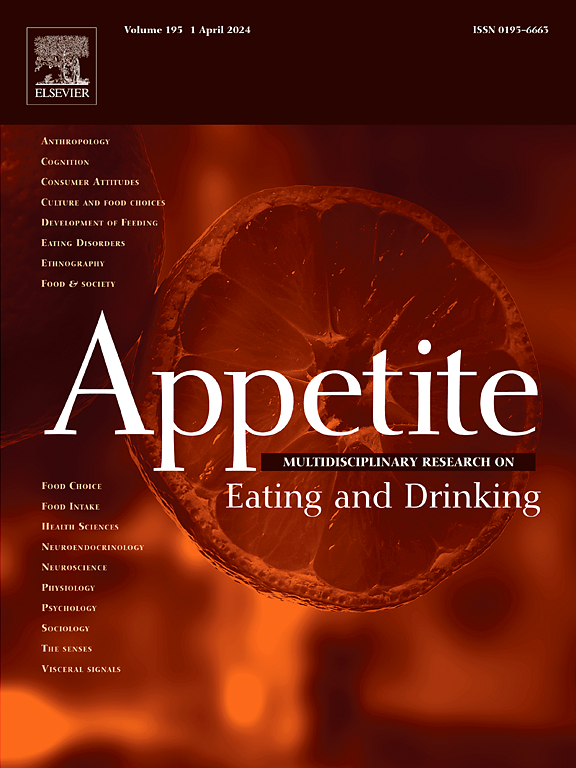健康但朦胧?消费者对食品群体健康和营养价值的认识
IF 3.8
2区 医学
Q1 BEHAVIORAL SCIENCES
引用次数: 0
摘要
以食物为基础的膳食指南旨在促进健康的饮食选择。缺乏营养知识部分解释了缺乏坚持。然而,很少有人关注对参考食物群体的具体理解,而这对于将指南转化为实践至关重要。因此,在这项研究中,我们调查了人们对食物组的理解,通过他们的食物选择作为饮食提示(典型的,健康的,低热量的,低糖的膳食)。96名参与者(66.7%为女性,平均年龄22.8岁)在自助餐上用真实的食物复制品(“假食物自助餐”)自助四餐。结果表明,某些食物组与特定的饮食特征有关(例如,蔬菜热量低,坚果和豆类健康且低糖)。尽管其他食物组(即油炸食品、甜点和其他含糖食品)与上述任何特征都没有关联,但它们仍然是典型膳食中的选择,这表明存在知识-行为差距。研究结果强调,适当地理解食物组是至关重要的,但并不能确保将饮食指南转化为相应的实践。对健康膳食提示的反应特别接近膳食指南,因此应在实践中加以推广。本文章由计算机程序翻译,如有差异,请以英文原文为准。
Healthy but hazy? Consumers’ understanding of the healthiness and nutritional value of food groups
Food-based dietary guidelines aim at promoting healthy dietary choices. Poor adherence has been partially explained by a lack of nutrition knowledge. Yet, little attention has been paid to the specific understanding of the referenced food groups, which is however essential to translate guidelines into practice. In this study, we therefore investigated people's understanding of food groups via their food choices as a rection to dietary prompts (typical, healthy, low-calorie, low-sugar meals). Ninety-six participants (66.7 % female, mean age 22.8 years) self-served four meals at a buffet with realistic food replicas (“Fake Food buffet”). Results indicated that certain food groups were associated with specific dietary characteristics (e.g., vegetables as low in calories, nuts and pulses as healthy and low in sugar). Although other food groups (i.e., fried foods, desserts and other sugary foods) were not associated with any of these characteristics, they were still chosen in typical meals, indicating a knowledge-behaviour gap. Results emphasize that understanding food groups appropriately is critical but does not ensure translating dietary guidelines into practice accordingly. The reaction to the dietary prompt of a healthy meal came particularly close to dietary guidelines and should thus be promoted in practice.
求助全文
通过发布文献求助,成功后即可免费获取论文全文。
去求助
来源期刊

Appetite
医学-行为科学
CiteScore
9.10
自引率
11.10%
发文量
566
审稿时长
13.4 weeks
期刊介绍:
Appetite is an international research journal specializing in cultural, social, psychological, sensory and physiological influences on the selection and intake of foods and drinks. It covers normal and disordered eating and drinking and welcomes studies of both human and non-human animal behaviour toward food. Appetite publishes research reports, reviews and commentaries. Thematic special issues appear regularly. From time to time the journal carries abstracts from professional meetings. Submissions to Appetite are expected to be based primarily on observations directly related to the selection and intake of foods and drinks; papers that are primarily focused on topics such as nutrition or obesity will not be considered unless they specifically make a novel scientific contribution to the understanding of appetite in line with the journal's aims and scope.
 求助内容:
求助内容: 应助结果提醒方式:
应助结果提醒方式:


